Lentil Oat Bread with Baking Powder

Ingredients:
| Name | Metric | US | TIP | |
|---|---|---|---|---|
| Green Lentils, dry | 150 gr | 1 cup | ||
| Oat Flour | 150 gr | 1 3/4 cups | ||
| Whole psyllium husk | 15 gr | 1/4 cup | ||
| Water, up to | 500 ml | |||
| Salt | 6 gr | 1 teaspoon | ||
| Baking Powder | 14 gr | 2 teaspoons | ||
| Vegetable Oil | 50 ml | 1/4 cup |
Optional Ingredients :
| 3 gr / 1/2 tsp Sesame Seeds | |
| 3 gr / 1/2 tsp Garlic Powder |
Equipment:
| Blender | |
| Loaf pan 8.5in x 4.5 inch / 21.5cm x 11.5cm |
Steps:
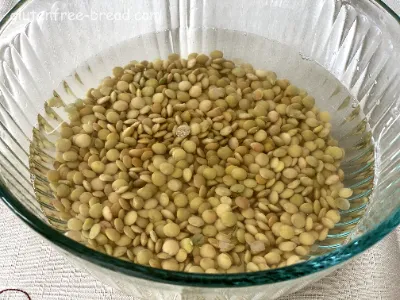
Step 1
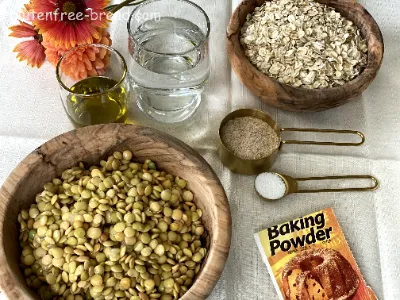
Step 2
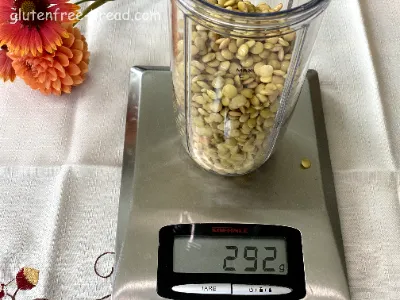
Step 3
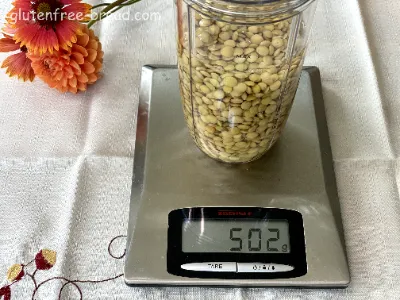
Step 4

Step 5
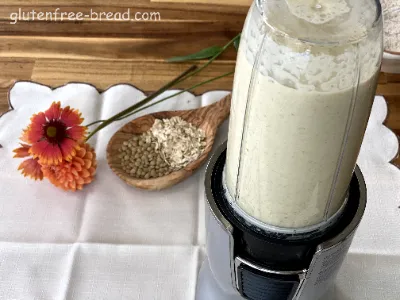
Step 6
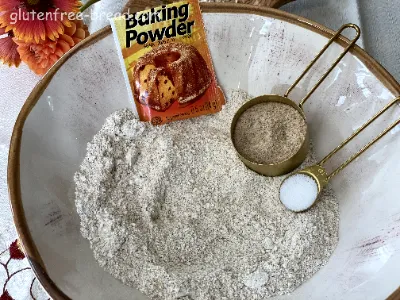
Step 7

Step 8
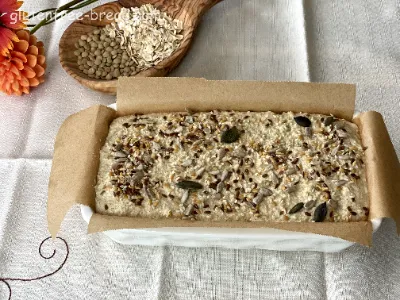
Step 9
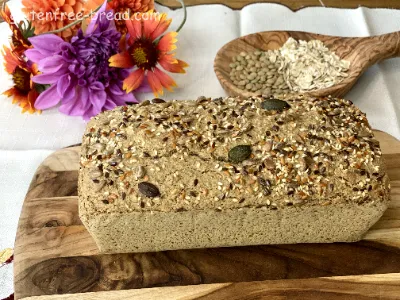
Step 10
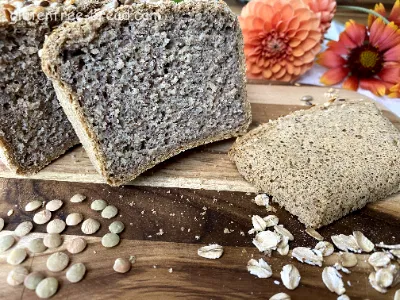
Step 11
Notes:

Lentil Oat Bread with Baking Powder
Tips and Common Problems When Baking Lentil Oat Bread with Baking Powder
Tips:
Accurate Measuring: Use a kitchen scale for precise measurements of lentils, oats, and other ingredients to ensure consistency and avoid any imbalance in the recipe.
Blend Thoroughly: Make sure to blend the lentils, water, and oil until smooth. This ensures a uniform texture in the bread and helps achieve the desired consistency.
Proper Soaking and Draining: Soak the lentils well and drain them thoroughly to remove excess moisture. This step is crucial for achieving the right texture in your bread.
Preheat the Oven: Ensure your oven is fully preheated to the correct temperature before placing the bread in. This helps with even baking and the proper rise of the bread.
Use a Thermometer: If unsure, use a kitchen thermometer to check the internal temperature of the bread. It should reach about 200°F (93°C) when fully cooked.
Cool on a Rack: Allow the bread to cool completely on a wire rack to maintain its texture and prevent sogginess.
Common Problems and Solutions:
Dense Texture:
- Problem: The bread may turn out dense if the lentils are not blended thoroughly or if there is excess moisture.
- Solution: Ensure lentils are blended to a smooth consistency and measure the water accurately. Avoid over-hydrating the mixture.
Inadequate Rise:
- Problem: The bread may not rise properly due to incorrect use of baking powder or insufficient mixing.
- Solution: Verify that the baking powder is fresh and mix it well with the other dry ingredients. Ensure the batter is well combined before baking.
Crumbly or Dry Texture:
- Problem: Bread can become crumbly or dry if the ratio of wet to dry ingredients is off.
- Solution: Measure ingredients carefully and add a bit more water if needed to achieve the right batter consistency.
Uneven Baking:
- Problem: The bread might bake unevenly if placed in the wrong position in the oven.
- Solution: Place the bread in the center of the oven and rotate it halfway through baking for even cooking.
Sticky or Moist Interior:
- Problem: The interior might remain sticky if the bread is undercooked or the batter was too wet.
- Solution: Perform the skewer test to ensure doneness and adjust baking time if necessary. Make sure the batter is not too runny before baking.
By following these tips and addressing common problems, you can achieve a perfectly baked Lentil Oat Bread that is both delicious and satisfying.
Lentil Oat Bread with Baking Powder additional information:
To store quinoa bread and maintain its freshness, follow these guidelines:
Short-Term Storage
Room Temperature:
- Cooling: Allow the bread to cool completely on a wire rack before storing.
- Wrap: Store the bread in an airtight container or wrap it tightly in plastic wrap or aluminum foil.
- Shelf Life: It should remain fresh for about 2 days at room temperature.
Avoid Moisture:
- Ensure the bread is completely cooled to prevent condensation, which can lead to mold growth and make the bread soggy.
Long-Term Storage
Freezing:
- Slice First: For convenience, slice the bread before freezing so you can easily take out individual slices as needed.
- Wrap: Wrap the bread tightly in plastic wrap or aluminum foil. For extra protection, place the wrapped bread in a resealable plastic freezer bag.
- Label: Label the bag with the date for reference.
- Freeze: Store the bread in the freezer. It can be kept for up to 3 months.
Thawing:
- Room Temperature: To thaw, remove the bread from the freezer and let it come to room temperature while still wrapped.
- Oven: Alternatively, you can warm the bread in the oven at 350°F (175°C) for about 10-15 minutes if you prefer it slightly toasted.
Additional Tips
- Avoid Refrigeration: Do not store bread in the refrigerator as it can become stale faster due to the cool, dry environment.
- Check Regularly: Inspect the bread for any signs of mold or off-smells before consuming, especially if it has been stored for a longer period.
By following these storage tips, you can keep your quinoa bread fresh and delicious for an extended period.







